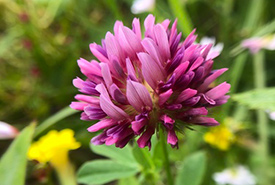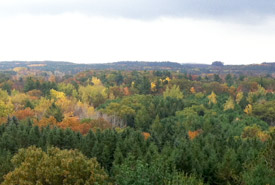Cultivating climate change solutions

Springbank clover has an edible root (Photo by catchang, CC BY-NC 4.0)
In the face of a changing climate and biodiversity loss, more and more we are looking to nature-based solutions. Lo and behold, the answer to these problems may be hidden just under our feet – deep within the roots of Indigenous Peoples’ life and culture in Canada.
Plant management among many First Nations in Canada was and continues to be comprised of extremely sophisticated systems. Far beyond the “hunter-gather” designation given to these communities by anthropologists, Indigenous Peoples have created, developed and maintained complex strategies to ensure a well-balanced relationship with Mother Earth. One where resources are harvested in a sustainable way that benefits the land.
Related content
There are several systems developed and used by Indigenous Peoples to maintain reciprocity with the land while living from her resources. Specifically, for First Nations in western Canada, the use of traditional management systems in the form of estuary or root gardens has proven to not only benefit the communities, but the coasts where they live.
Revitalizing these systems not only helps achieve conservation goals, it helps Indigenous Peoples reconnect with their roots.
Over a decade ago, the Nuu-chah-nulth and neighbouring First Nations in BC launched the λ’aayaʕas Project. The project focused on using Traditional Ecological Knowledge of root gardens grown on their estuarine tidal flats. These gardens were made up of edible, nutritious roots and tubers that were cultivated to enhance the crops’ productivity and quality. The result was tasty Indigenous root vegetables that included gardens of native clover and silverweed.
Not only were these plants a main source of carbohydrates for the community, especially before the introduction of other starchy vegetables such as potatoes, they were also used for trading and in ceremonies. Their traditional uses remain an integral part of the community’s cultural history.
The λ’aayaʕas Project brought back these systems to the area and to strengthen intergenerational knowledge sharing between community members. In the past, these gardens were maintained through methods such as weeding, replanting, selective harvesting and tilling the soiling.
Re-establishing the root gardens helps feed the community and fosters a resurgence of the knowledge, skills and traditional practices used to manage these plant systems. Root gardens, like many traditional Nuu-chah-nulth food practices, are a sustainable and long-term solution to keeping their community fed, without negatively impacting the environment.
Establishing root gardens is happening in other places across Canada, too. In northwestern Ontario, the Wabaseemoong Independent Nations (WIN) are using cultural practices and Traditional Ecological Knowledge systems to re-integrate wild rice (manomin) into their communities.
Similar to the Nuu-chah-nulth’s relationship to root gardens, the cultural connection between the Peoples of WIN and manomin is seen through the growing, maintenance and harvesting of this crop. Sharing knowledge of these traditional techniques is helping connect youth and younger generations to their culture and keeping their practices alive within their communities.

Webber Vista, Rice Lake Plains, Ontario (Photo by NCC)
The Nature Conservancy of Canada (NCC) has collaborated with the Alderville First Nation in central Ontario in the Rice Lake Plains to use controlled fire to help maintain the natural integrity of the ecosystem. Natural fire cycles, mimicked through the use of prescribed burns, have restored and expanded the last remaining pockets of the tallgrass ecosystem in the area. Prescribed burns also increase plant diversity, including those that were traditionally used by Indigenous Peoples.
More and more, nature-based solutions to climate change are becoming a popular answer to the environmental problems faced by humans. By re-establishing traditional cultivation practices on the land, we can help landscapes prosper. The success of the land is mirrored in the communities that have lived on it for time immemorial and continues to be demonstrated as their cultures flourish. By protecting and fostering cultural practices, we are one step closer to turning the clock back on climate change.


